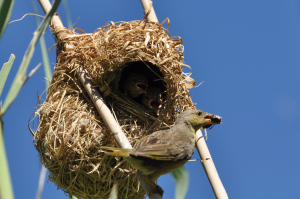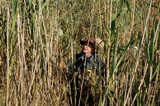PHOWN summaries and recordsVirtual Museum View records in Virtual Museum formatCoverage map for all species Species totals, Nest stats per species and Observer totals Species summary , or General query Observer records, or View VM record Photo of the week, or PHOWN repeats, or PHOWN priorities |
PHOWN record summary
|
Enter new vm record to see a different record and hit 'Go'.
|
Species allocated by Coordinator: Record details entered by participant: (see all records here for this participant) Google map for this record (zoom in and switch to satellite view)
Best: Cape Weaver - female with insect, chicks begging
Photos uploaded by observer

Large photos
799, Cape Weaver Ploceus capensis (see species summary here)Record status ACCEPTED Vm 5330 [on-line data upload (2013-04-10): 37219] Species Cape Weaver Observer(s) Lee A. Country, town, locus South Africa, Western Cape, UNIONDALE,
3323CBLocality Blue Hill Nature Reserve, Baviaanskloof Megareserve Latitude, longitude -33.59979172, 23.41781984 [50 m accuracy] Date 2012/1/2 Notes This was an unusual nesting recording from the size of the active colony - 1 nest by weaver CV60979. There were 2 or 3 'empty' nests, but a male was never observed. The patch of Phragmites reeds was small - perhaps 30m by 10m maximum. The area burnt in a fire a month later, but I suspect the chicks would have fledged by then. In the photo the female is observed with an insect, possibly a field cricket.
Nest count 3 Nest site reed
To see this map with all other PHOWN records, click here. Note that the map on this page will load very slowly and probably will only work if you use Chrome as a browser.
History of repeat colony counts
Note: repeats from the same day are not shown.vm Species code Date Nests Notes 5330 799 2/1/2012 3 This was an unusual nesting recording from the size of the active colony - 1 nest by weaver CV60979. There were 2 or 3 'empty' nests, but a male was never observed. The patch of Phragmites reeds was small - perhaps 30m by 10m maximum. The area burnt in a fire a month later, but I suspect the chicks would have fledged by then. In the photo the female is observed with an insect, possibly a field cricket.

Vm 5330










